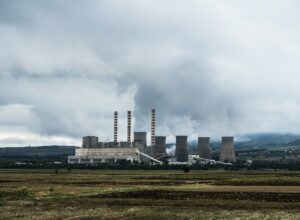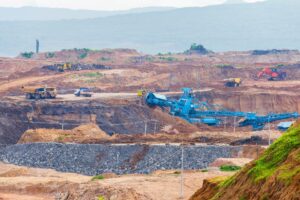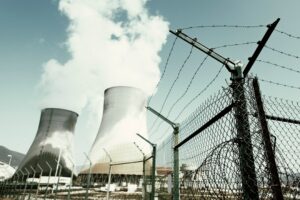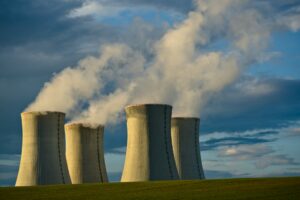As the world increasingly recognizes the importance of clean, low-emission energy sources, the United States is presented with numerous growth opportunities to lead the charge in sustainable energy production. These opportunities will not only contribute to a cleaner environment but also diversify the nation’s energy portfolio, fuel economic development, and help meet the targets set by the Paris Agreement on climate change.
In this article, we will explore seven growth opportunities within the US clean energy industry, focusing on areas such as advanced nuclear technology, grid modernization, and the integration of renewable energy sources. Each of these domains offers unique prospects for expansion, technological innovation, and the creation of new jobs, as America continues its transition to a sustainable, environmentally-conscious energy future.
1. Advanced Nuclear Technology
Over the past few decades, extensive research and development efforts have resulted in significant advancements in nuclear technology, making it a safer, more efficient, and more viable clean energy option [source: [U.S. Department of Energy](https://www.energy.gov/ne/office-nuclear-energy)]. Advanced nuclear power plants are designed to offer improved safety features, lower construction costs, and reduced environmental impact when compared to traditional reactors. One key development in this area is the emergence of small modular reactors (SMRs), which are scalable and can be deployed more quickly and at a lower cost than larger reactors.
Investments in advanced nuclear technology can help the US reduce its dependence on fossil fuels, decrease greenhouse gas emissions, and create quality jobs in the clean energy sector. Furthermore, fostering nuclear technology innovation can position the US as a global leader in sustainable energy solutions.
2. Grid Modernization
Modernizing the nation’s electric grid is another promising growth opportunity within the US clean energy industry. A more flexible, resilient, and decentralized grid is vital for integrating various clean power sources, including renewable energy and energy storage systems. Upgrading the grid infrastructure, developing advanced metering systems, and improving demand-side management practices can benefit both utility companies and consumers in terms of reliability, cost savings, and overall energy efficiency [source: [U.S. Department of Energy Grid Modernization Initiative](https://www.energy.gov/grid-modernization-initiative)].
By investing in grid modernization, utilities, regulators, and policymakers can facilitate the widespread adoption of clean energy resources and foster innovation in data analytics and energy management.
3. Renewable Energy Integration
The integration of renewable energy sources, such as solar, wind, and hydropower, into the national energy mix presents a growth opportunity for the US clean energy industry. By incorporating renewable energy into the power grid, the country can reduce its reliance on fossil fuels, lower its carbon footprint, and promote domestic energy independence.
Several factors can support the increased adoption of renewable energy sources, including:
* Investment in energy storage systems, which can help balance the intermittency of renewable power generation
* Expansion of transmission infrastructure to connect renewable energy facilities to the grid
* Implementation of policies and incentives that encourage renewable energy development, such as tax credits, grants, and feed-in tariffs [source: [National Renewable Energy Laboratory](https://www.nrel.gov/state-local-tribal/reliability.html)].
4. Energy Efficiency and Demand-side Management
Energy efficiency improvements and demand-side management strategies can play a significant role in driving growth within the US clean energy industry. By implementing energy-saving measures in residential, commercial, and industrial sectors, the country can reduce its overall energy consumption and associated emissions. Various initiatives can be undertaken in this domain, such as:
* Building retrofits and the adoption of energy-efficient appliances
* Applying smart grid and Internet of Things (IoT) technology to optimize energy use
* Developing and promoting guidelines for energy-efficient design and construction practices [source: [U.S. Energy Information Administration](https://www.eia.gov/efficiency/)].
Increasing the focus on end-user energy efficiency and conservation measures can lead to substantial cost savings, reduced greenhouse gas emissions, and enhanced energy security.
5. Electric Vehicle Infrastructure Development
The electric vehicle (EV) market is growing rapidly, offering significant opportunities for the clean energy industry in the United States. Investment in expanding and improving the EV charging infrastructure, along with the development and deployment of advanced battery technologies, is essential for meeting the increasing demand for electric transportation [source: [U.S. Department of Energy](https://www.energy.gov/eere/electricvehicles/charging-infrastructure-deployment)].
A robust EV infrastructure not only benefits consumers by making electric vehicle adoption more practical and convenient but also contributes to reducing emissions, decreasing dependence on oil imports, and promoting clean energy technologies.
6. Clean Energy Workforce Development
The clean energy industry requires a skilled workforce to support its long-term growth, presenting an opportunity to invest in education and training programs across various sectors. Fostering a strong clean energy workforce includes creating curricula, certifications, and job placement programs focused on energy efficiency, renewable energy, nuclear energy, and other related sectors [source: [U.S. Department of Energy](https://www.energy.gov/eere/wipo/clean-energy-jobs)].
By developing a pipeline of skilled professionals, the United States can ensure sustainable growth in the clean energy industry and meet the increasing demand for specialized talent in fields such as engineering, project management, and data analytics.
7. Public-Private Partnerships and Collaboration
To drive growth in the US clean energy industry, collaboration between public and private sectors is essential. Encouraging partnerships between government agencies, academic institutions, utilities, technology developers, and investors can help support research, development, and commercialization of emerging clean energy technologies.
Combining resources, expertise, and financial support through public-private partnerships can contribute to accelerating the adoption of clean energy solutions, fostering innovation, and creating new business opportunities in the clean energy market.
Conclusion
The United States has numerous growth opportunities within the clean energy industry, ranging from advanced nuclear technology and grid modernization to renewable energy integration and workforce development. By capitalizing on these prospects and fostering public-private collaborations, the nation can achieve remarkable progress in transitioning to a sustainable, low-emission energy landscape.
Industry leaders like William Sheriff and enCore Uranium play a vital role in shaping America’s clean energy revolution, driving innovation and success in the sector. By investing in the development and implementation of cutting-edge solutions, the US can reduce its carbon footprint, create jobs, spur economic development, and ultimately secure a cleaner, more sustainable future for generations to come.
To learn more about William Sheriff, enCore Uranium, and our commitment to advancing the clean energy industry in the United States, we invite you to browse through our website. Join us in spearheading transformative innovations and embracing the remarkable potential and impact of clean energy technologies as we work together to create a brighter, more resilient energy future for all Americans. Contact our uranium expert now.





